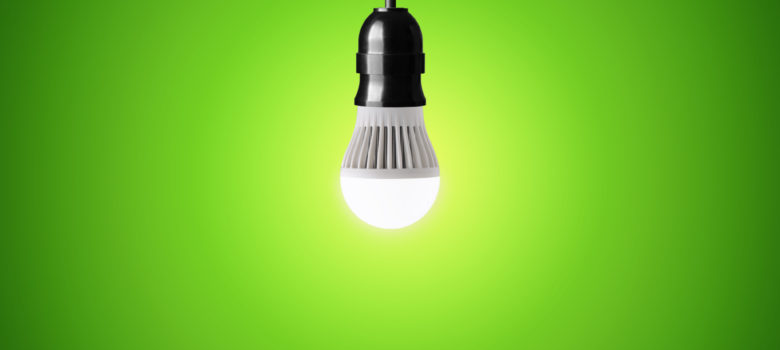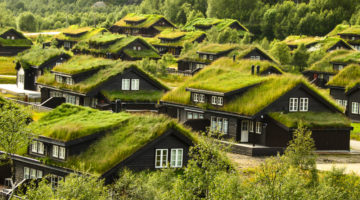
How do LED bulbs differ from other light bulbs?
LED bulbs are an energy efficient alternative to standard light bulbs. Traditional incandescent bulbs work by passing an electric current through an extremely thin filament which becomes very hot, thereby emitting light. Of all the electricity that goes through the filament, only a small proportion is given off as light. The remainder is wasted as heat (approximately 90%), so these bulbs are grossly inefficient, and waste electricity. In September 2012, the EU issued a directive banning the commercial sale of any incandescent light bulb over 40 watts to homeowners.
LED bulbs are far more efficient than traditional light bulbs, which give off most of their energy as heat. In fact, LEDs use 90% less energy. They are also more efficient than CFLs; one LED bulb lasts as long as eight CFLs (the old-fashioned ‘energy saving’ lightbulbs) and uses a quarter of the energy over its lifetime.
What’s the science behind LED lighting?
LED bulbs are comprised of numerous light emitting diodes that together produce light when a current is passed through them. The electrical current excites the electrons inside the diode which produce photons (light) as a result. LEDs are often referred to as solid-state lighting which simply means that the light is emitted from a solid object (a block of semiconductor), rather than because a current passes through a filament, causing it to glow.

LED bulbs require just 10% of the electricity used by an incandescent bulb, but produce the same amount of light.
That means truly significant energy savings in the home – Suddenly replacing just one 50Watt halogen spotlight in your kitchen with a 5Watt LED equivalent could save you over £15 a year (just one bulb!) but produces the same amount of light.
Are LED light bulbs safe?
Yes! Despite the rumours, there’s no evidence to suggest they’re bad for your health. We wrote about it here.
Can I install LED bulbs myself?
Yes – they are just like any other bulb in this respect. They are available with bayonet or screw fittings.
How much do LED bulbs cost?
Around £5-10, depending on the wattage. Sure, they’re a bit pricier to buy, but the initial investment will more than pay off in the savings you’ll make to your energy bill!
Benefits
-
- An LED bulb has the potential to last between 25 and 40 years, and will use about 90% less energy compared to a similar incandescent counterparts. They also ‘warm-up’ instantaneously unlike the CFL bulbs.
- Energy saving light bulbs are more durable than traditional incandescent bulbs as they have no filament so will potentially survive jarring where traditional bulbs would get broken
Limitations
-
- Costs more than the traditional type – however these costs will be paid back many times over in energy savings.
Think we missed something? Do you have a different opinion?
Comment below to get your voice heard…












No Comments yet! Be the first one.